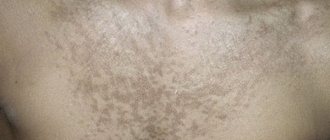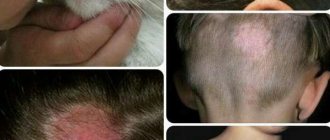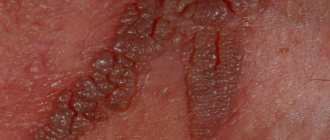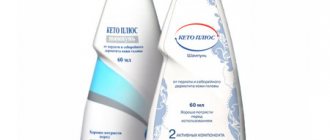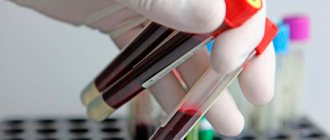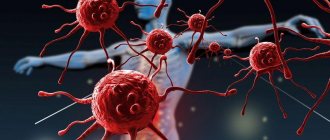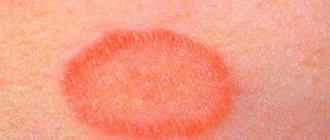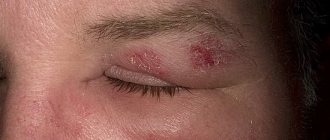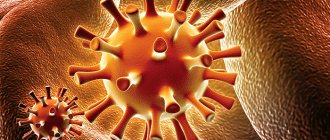Pityriasis versicolor in humans is a fungal skin disease caused by a fungus of the genus Malassezia. This fungus lives in the stratum corneum of the epidermis.
Appears as flaky spots on the skin. Since pityriasis versicolor can come in different shades, it is also called pityriasis versicolor.
Factors that may influence the appearance of this disease are increased sweating and the presence of seborrheic diathesis.
There are three types of pityriasis versicolor, depending on the structure:
- Yellow.
- Black.
- Achromic.
Patients who have a tendency to develop pityriasis versicolor should avoid the following unfavorable factors:
- Stress.
- Strong physical activity.
- Prolonged stay in places with elevated air temperatures (including hot weather outside).
- Increased sweating.
- Wearing tight or synthetic clothing (preferably 100% cotton).
It is important to monitor your body hygiene, take a shower often, and lead a healthy lifestyle.
It is recommended to regularly disinfect bedding and underwear, as well as hats and clothing by boiling in a 2% soap-soda solution (then thoroughly iron with a hot iron and steam).
Tablets for the treatment of pityriasis versicolor
Rumicosis
The drug Rumikoz
Itraconazole is the main component of the drug, created to suppress the unpleasant symptoms and manifestations of lichen. The medicine is taken without taking food into account; it is better to do it at the same time. This regimen will allow you to maintain a constant amount of itraconazole in the blood and more effectively eliminate the disease. Available in capsule form. Patients over 16 years of age who have reached a body weight of 45 kg are prescribed 200 mg of Rumikoz. The duration of the chosen therapy is seven days. Do not use by pregnant women, children and nursing women.
Itrazole
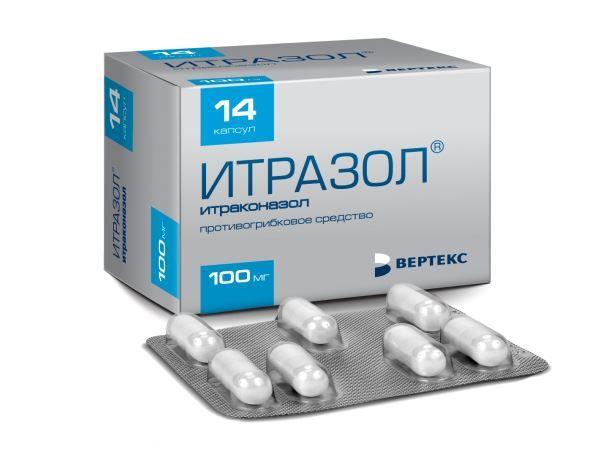
The drug Itrazol for the treatment of pityriasis versicolor
The capsules also contain itraconazole, which is a synthetic broad-spectrum antifungal substance. Do not use in any trimester of pregnancy or during breastfeeding. It is necessary to learn individually about the possibility of use in childhood. In classical treatment, adult patients are prescribed two capsules of Itrazol once a day; for severe lesions, four capsules, divided into evening and morning doses, are allowed. You should not take the drug for more than seven days.
Fluconazole

The drug Fluconazole
When using this medication, treatment continues for eight weeks. The patient should take 150 mg of the active substance immediately after meals strictly once a week. The drug is easily tolerated in a combination regimen and rarely causes health-threatening symptoms. Cannot be used during pregnancy and breastfeeding.
Attention! Oral medications are prescribed in exceptional cases, when the disease has affected a large area of the body and scalp. The course of therapy is always short, and therapy is always combined.
Treatment of childhood dermatosis
In the treatment of children from pityriasis versicolor on the head, only gentle methods and drugs are used, doses are carefully adjusted and medications are selected. Therefore, when it comes to a child, there can be no talk of self-medication. Moreover, the more the treatment process is delayed, the greater the risk that other infections will join the existing problem, since it is quite difficult to ensure that the child does not scratch the affected area.
Treatment tactics are almost the same as for treating adult patients. First of all, creams and ointments are prescribed, and only if the results are poor, tablets are prescribed.
Most often, “Sertaconazole”, “Bifonazole”, that is, imidazole derivatives, are used in children’s treatment.
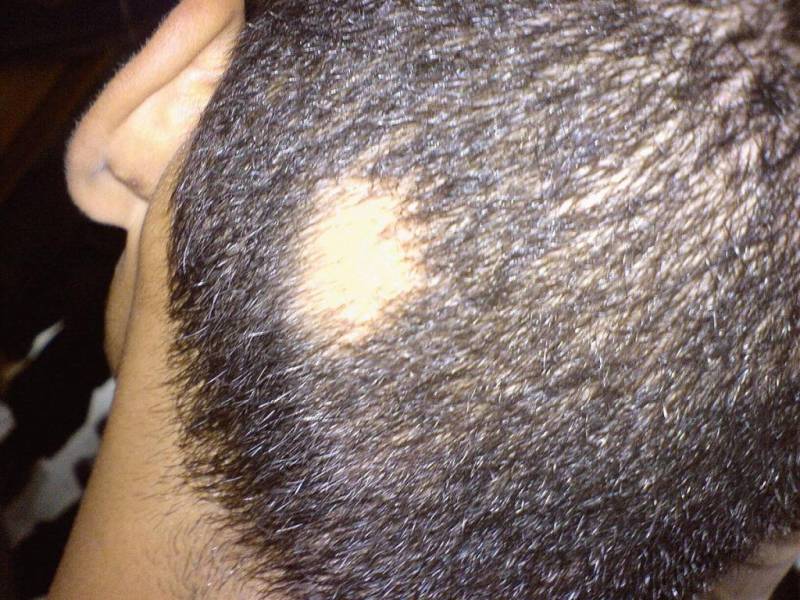
Solutions and sprays for the treatment of pityriasis versicolor
Bifonazole
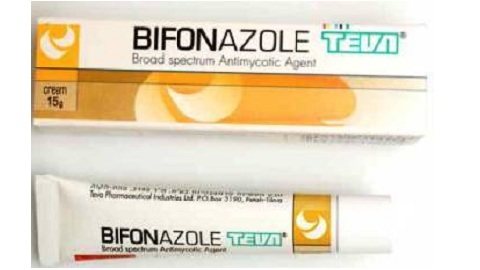
The drug Bifonazole treats most fungal diseases
The active substance of the drug is bifosin, which treats most fungal diseases. To eliminate traces of pityriasis versicolor, you should use only a solution with 1% activity. Apply the medication only once a day at any convenient time. When prescribing other medications, it is worth additionally clarifying what regimen should be used for treatment, since mixing active substances is extremely undesirable. The duration of therapy is at least two weeks, and the product cannot be used for more than 21 days.
Terbinafine
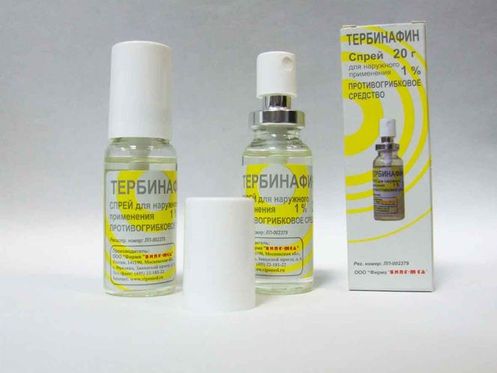
The drug Terbinafine
Available in spray form for topical use. A special feature of the drug is that when it is prescribed, monotherapy can be carried out without the use of other pharmaceuticals. It is necessary to apply the medication to sore skin, as well as to healthy areas near the lesions to prevent their infection. Terbinafine should be used twice daily for one week.
Clotrimazole
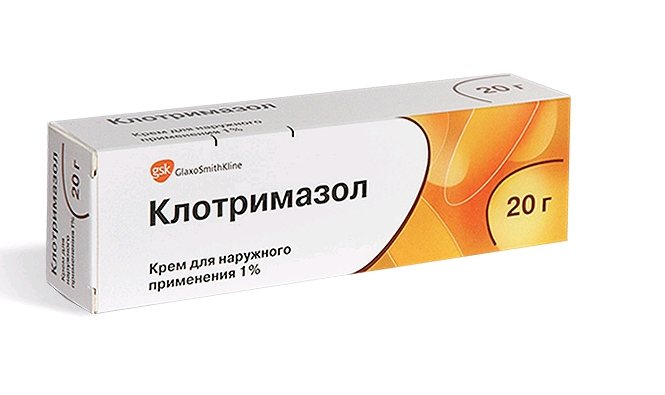
The drug Clotrimazole for the treatment of pityriasis versicolor
Available in several pharmacological forms from shampoo to solution. The solution is used once a day at any convenient time. To suppress the symptoms of the pityriasis variety, only 1% product is also used. Sometimes the number of uses can be increased up to two times. The duration of treatment varies from one to three weeks, taking into account the state of health, age and complexity of the disease.
Attention! Typically, treatment with these drug groups does not bring any side effects and does not affect the patient’s general health. But in exceptional cases, patients experienced itching and burning, after which a complete cancellation of the prescribed regimen was required.
Causes of pityriasis versicolor
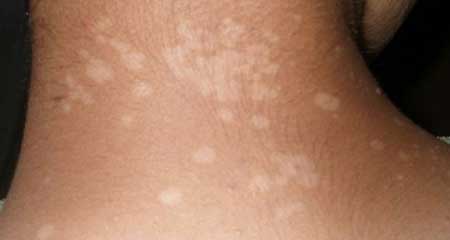
Pityrosporum fungi, which cause pityriasis versicolor, live in small quantities on the skin of a healthy person, forming part of the normal microflora, and are in the form of Pityrosporum orbiculare. Under certain conditions, they begin to multiply and transform into their pathogenic forms:
- Pityrosporum ovale is an oval-shaped fungus that causes primary damage to the stratum corneum;
- Malassezia furfur - is activated with the further development of the disease, after the formation of spots, penetrating into deeper layers and forming mycelium.
All three named forms are varieties of one type of yeast-like fungi, and the provoking causes of the appearance of pityriasis versicolor are:
- increased sweat production - in hot weather, during high physical exertion, against the background of pathologies;
- poor unbalanced diet;
- illnesses with a regular increase in temperature;
- oily seborrhea;
- long-term use of antimicrobial drugs, oral contraceptives or glucocorticoids;
- alkaline sweat environment caused by obesity, diabetes, malignant neoplasms;
- hereditary predisposition;
- living in countries of the tropical or subtropical zone, for comparison - in the tropics up to 40% of the population faces this pathology, in the temperate zone only up to 5%;
- age up to 10 and after 55 years.
Decreased immunity is not considered by doctors as one of the main predisposing factors or causes of lichen versicolor. Pityrosporum fungi are not transmitted from person to person, that is, this form of lichen is not contagious, despite its infectious nature.
Ointments and creams to eliminate pityriasis versicolor
Fungoterbin
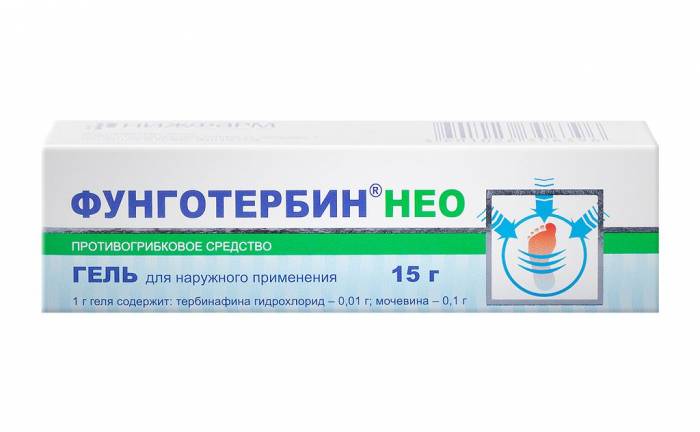
Fungoterbin should be used strictly after preliminary cleansing of the affected skin areas.
The main component of Fungoterbin is terbinafine, which can be used strictly topically. Use the cream strictly after preliminary cleansing of the affected areas of the skin; this can be done simply by taking a shower. Apply the substance once a day for two weeks. The strength of Fungoterbin is the possibility of its use from the age of two and during pregnancy. Even when the symptoms have disappeared before the end of treatment, it is worth completing the treatment regimen to prevent the disease from developing again on the body. It is worth knowing that relapses are much more dangerous and quickly affect new and healed areas of the skin.
Mycozoral
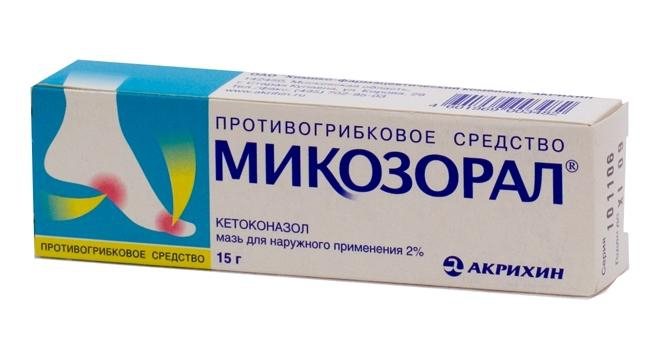
The drug Mycozoral eliminates staphylococcus and streptococcus
The main active ingredient of the drug is ketoconazole, which eliminates most pathogenic fungi, including such dangerous pathogens as staphylococcus and streptococcus. The medicine is produced not only in the form of a cream, but also in the form of suppositories and shampoo. When using the cream, the patient quickly disappears all the unpleasant symptoms of lichen, while completing treatment ahead of schedule is strictly prohibited. This is necessary to prevent relapse of the disease. Mycozoral in monotherapy is used once a day for 21 days. When prescribing other medications, the number of daily doses does not change, but it is advisable to use the ointment in the afternoon or morning without mixing with other medications. The duration of therapy is also three weeks.
Ciclopirox
Ciclopirox
It can be used not only on the affected skin, but also on the scalp, gently rubbing the product with massage movements. The duration of therapy is relatively short and lasts a maximum of 10 days. At the same time, it is strictly forbidden to discontinue the drug on your own if the symptoms disappear before completing the prescribed regimen. Use the ointment twice a day, morning and evening. To treat pityriasis versicolor, you can also take a 1% solution of Ciclopirox, which is used in the same way. Not used during pregnancy and lactation.
Attention! The described pharmaceutical products should be used in combination therapy to avoid dangerous withdrawal syndrome, as well as subsequent relapse of pityriasis versicolor. In this case, Mycozoral and Fungoterbin are used in the morning, and another remedy in the evening.
Signs of the disease
After the fungus infects the skin, it causes disruption of the melanocytes. As a result of this, they stop synthesizing melanin: because of this, some areas acquire non-standard coloring. This circumstance affects how tinea versicolor looks. This lesion appears as small spots (can be dark brown, yellowish, pink, or reddish brown).
- After sun exposure, the spots become lighter, making them more visible on the body. During the cold season, the “islands” turn coffee-colored.
- More often, the fungus settles on the shoulders, back, chest and armpits. In addition, “islands” may appear on the face and scalp. Photos help you understand how tinea versicolor manifests itself.
- Fungal infection may be accompanied by severe itching.
The main distinguishing feature of pityriasis versicolor are small spots on the skin that have clear boundaries.
After some time, the spots merge and become large lesions the size of a palm.
A few more facts:
- The spots can be of different colors - yellow, brown, pink, etc.
- The affected area does not tan in the sun, so in summer the spots may appear lighter than healthy skin. They appear most often on the back, shoulders, armpits, neck, and chest.
- The patient may notice slight itching and flaking of the skin, as well as excessive sweating.
- The longer the disease lasts, the darker the spots become, and the affected area increases over time.
- The formations do not rise above the healthy skin.
Features of treatment
streptoderma in adults
and possible complications that may arise after the disease.
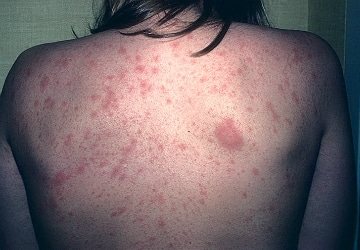
Be sure to read:
Pityriasis rosea: main causes and treatment of the disease
Find out from this article what skin hyperkeratosis is: causes and types of the disease, effective treatment methods.
The presence of fungus can only be determined by a specialist. However, the appearance of a fungal infection can be assumed by the presence of pink, brown or yellowish spots on the skin. The formations have uneven edges and an asymmetrical shape.
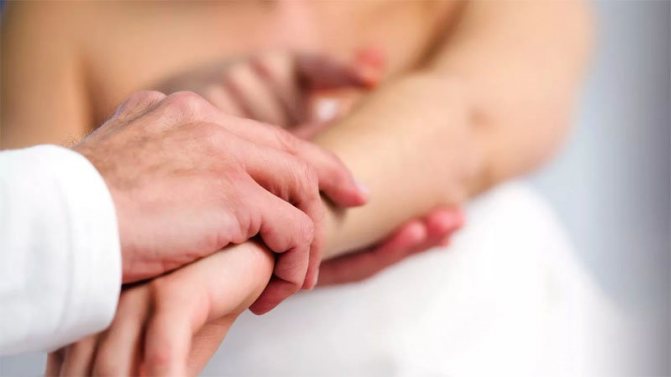
For each individual patient, the location, volume of the lesion, and color of the spots will be different. The size of the spots in the initial stage can be up to one centimeter in diameter. As the disease spreads, the spots begin to increase in size and merge into one.
The shape of the spots also changes: it becomes oval or diamond-shaped, with active peeling in the center.
With tinea versicolor, spots appear on the body in a chaotic manner. In order not to confuse sunburn spots with pink lichen, the diagnosis should be carried out by a specialist. Often these types of fungal infections are similar due to the same symptoms - in some cases, the spots of tinea versicolor have a pink tint.
The presence of tinea versicolor does not lead to dangerous complications and does not harm health. Other types of fungus can affect and negatively affect human internal organs and systems.
The only trouble that can be caused by lichen is that scratching the spots can cause inflammation and suppuration of the skin.
After the patient has managed to cure tinea versicolor, white pigment spots remain on the skin for a long time. They are gradually compared to the skin tone under the influence of ultraviolet radiation.
Some signs are identical to Zhiber's lichen: the formation of pink spots on the skin, elongated or diamond-shaped. In the center of the spot there is obligatory peeling of the skin. Similar to syphilitic roseola: pink spots may disappear upon palpation, there is no peeling. Therefore, if you detect these signs, you must consult a doctor for an accurate diagnosis. You can identify pityriasis versicolor by symptoms for appropriate treatment using a photo.
Pityriasis rosea can develop over a long period of time, but without characteristic symptoms. The fungus actively spreads only under provoking factors.
When an area of skin is affected by the pathogen, spots are observed. In the first few days they have a light shade, after which they acquire a color from yellow to dark brown. A distinctive feature of pityriasis rosea is the absence of inflammation and itching in the affected areas.
As the disease progresses, the spots gradually increase in size. Mainly on the skin of the chest, back, feet, hands. Rarely occur on the head, armpits, and groin area. There are no hair follicles at the spots. If there is a suspicion of lichen versicolor in a person, drug treatment is required with the first symptoms.
With the disease, there is no change in well-being. Accompanied by psychological discomfort: complexes regarding appearance develop. We offer you to clearly see lichen versicolor in the photo and be convinced of the importance of proper treatment.
https://www.youtube.com/watch?v=AJcqQfK41aA
It is transmitted through household contact through shared combs, towels, household items, and direct contact with the patient.
The main symptoms of versicolor:
- yellow/pink/light brown spots on the skin;
- increased peeling of the affected areas;
- slight itching.
The morphological elements of pityriasis versicolor are spots of different colors. Initially they form around the mouths of hair follicles and gradually grow to significant sizes. Elements of lichen can merge with each other, forming figures with uneven contours. Their colors are different, so lichen is called multi-colored. Mature spots are usually dark brown or café au lait.
The edges of the lesions are flush with the skin surface and do not differ in feel from healthy tissue. Palpation does not cause any discomfort to the patient, and they do not disappear when pressed. The surface of the spots is covered with small white dry scales, which are easily removed by scraping. In some cases, peeling is revealed only by scratching.
The spots are located asymmetrically, that is, their localization may be different on the right and left half of the body. Most often they appear on the skin of the chest, back, neck, and abdomen. Less often - on the scalp, upper limbs, thighs. In children and during puberty, the spots spread widely over the skin, affecting the neck, chest, back, armpits and limbs.
Why is tinea versicolor dangerous? Long-term persistent course of the disease leads to sensitization of the body - excessive activity of the immune response. A similar mechanism underlies skin allergic reactions, atopic dermatitis, and contact dermatitis.
In pityriasis versicolor, the mycelium of the pathogenic fungus rapidly multiplies in the stratum corneum of the skin. This provokes an inflammatory reaction, as well as the death of horn cells.
As a result, the cells of the stratum corneum begin to peel off and acquire a characteristic color and scaly structure, which determines the name of the disease.
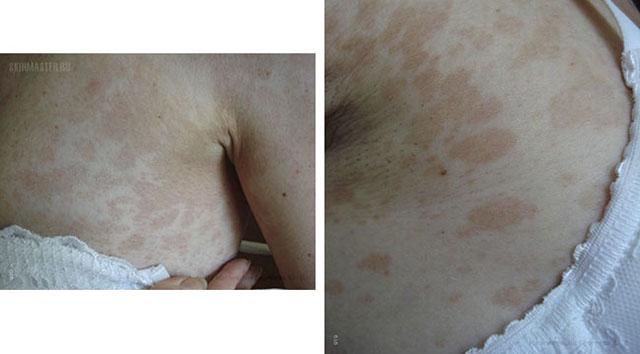
Symptoms of pityriasis versicolor depend on the stage of its development:
- First, small pink spots appear on the skin.
These spots rise slightly above the surface of the skin. They do not cause any concern at first. Pityriasis versicolor in humans: photo - As the disease progresses, the spots begin to grow, merging with each other and becoming brownish in color on untanned skin and pale yellow in sun-exposed skin.
Lichen versicolor: photo
Patients often have no itching. Only patients who are prone to excessive sweating suffer from it.
The disease has a long course, often worsening under the influence of unfavorable factors, for example, after an infectious disease or after taking hormonal drugs.
Treatment of pityriasis versicolor pilaris
Nizoral
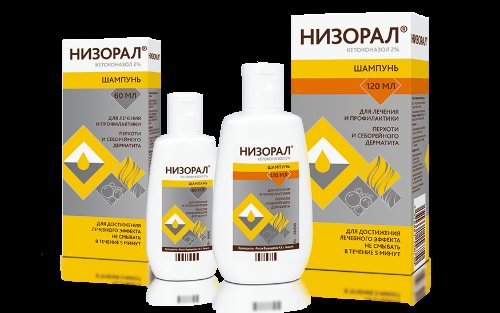
Nizoral fights a large list of fungal diseases
A popular product that fights a large list of fungal diseases. Apply the medication to a clean scalp, gently foaming the shampoo. In this form, it must be kept for at least five minutes, after which rinse the hair and skin with clean water at a low temperature, it is better that it is not higher than +40 degrees. Nizoral is used only once a day for five days. You should learn about the possibility of use in childhood and pregnancy only during an in-person examination after assessing the complexity of the disease.
Sebozol
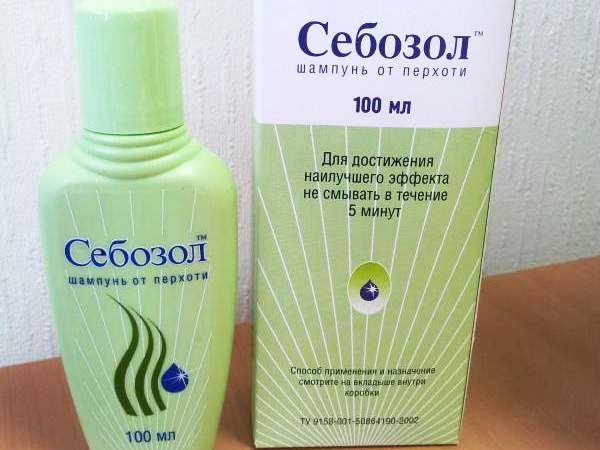
Sebozol
It is produced with the main component ketoconazole, which can suppress most fungi and other pathogens. It is used according to a special scheme and only in combination therapy. Once a week, apply the product to damp hair, thoroughly rubbing it into the skin. After five minutes, Sebozol is washed off. In case of severe lesions, the patient may be prescribed the same regimen as Nizoral. In this case, it is necessary to use the product once a day for five days. It is better to do this in the evening and let your hair dry naturally.
Attention! Usually the source of pityriasis versicolor is located in the scalp, which provokes constant relapses. That is why the use of shampoos is highly recommended if no focus of the disease is identified on the body.
Video - Pityriasis versicolor
What to use if you are intolerant to antifungal agents
Antimycotics quickly cope with the treatment of lichen, but in case of intolerance to them, you can use the following remedies:
- Psoril ointment based on natural oils of medicinal plants (mint, milk thistle, elderberry, violet, etc.);
- 10% sulfur-salicylic ointment;
- Vishnevsky or Konkov ointment;
- 20% solution of benzyl benzoate - used once a day for 5 days (for a child, you need to use a 10% solution).
In the treatment of multicolored lichen, people also use iodine and drugs such as Iodovidone, Betadine, Iodoform.
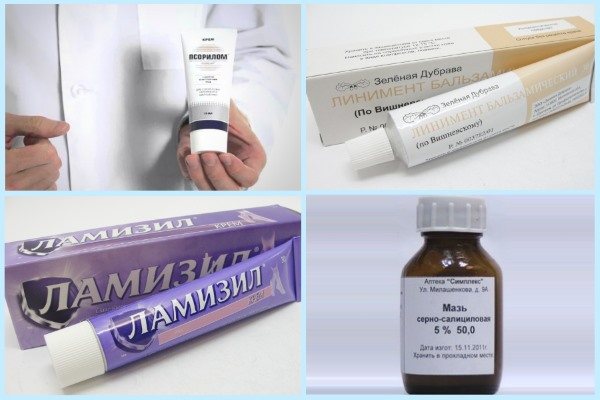
An effective remedy for treating areas of the body covered with lichen is boric acid. The powder is poured with boiling water at the rate of 10 g per glass of water and used after cooling. Boric acid therapy should be continued for 10 days, but it is contraindicated in children and pregnant women.
For expectant mothers, a safe remedy is Tsindol, consisting of zinc oxide, talc, water, glycerin, alcohol and starch.
Often, the use of only external remedies for pityriasis versicolor in humans is not enough. In this case, the doctor may prescribe systemic medications such as Fluconazole or Rumicosis. These drugs have a number of contraindications.
Other methods for eliminating pityriasis versicolor
If for some reason antifungal therapy does not produce results, the doctor uses homeopathy, which can also show a fairly good result. In this case, Psoril, produced in the form of an ointment, becomes a classic drug. It is applied to the affected areas twice a day. The duration of therapy is determined strictly individually with constant monitoring of the condition. Psoril can also be combined with Vishnevsky ointment. Since it can greatly stain the skin, it is best to use it only on closed areas. In addition, doctors recommend adhering to the following rules:
- change underwear every day;
- try to wear things exclusively from natural fabrics;
- distribute the use of ointments prescribed in combination therapy so as not to mix the active substances;
- do not end therapy early;
- stop eating allergenic foods, replacing them with vegetables, unsweetened fruits and protein;
- take mineral and vitamin complexes;
- take water procedures every day.
Attention! If Vishnevsky ointment has severely stained the skin, you can help yourself with fresh lemon juice. The procedure should not be overused, as it harms the skin.
Video - How to treat pityriasis versicolor with traditional methods
Prevention
To get rid of the disease as quickly as possible and prevent its spread, you need to follow some recommendations:
- maintain personal hygiene;
- carry out wet cleaning daily, disinfect and disinfect surfaces, door handles, switches, etc.;
- the patient must have an individual towel, bed and underwear, dishes, and various hygiene items;
- do not wear clothes made of non-breathable synthetic materials;
- strengthen the immune system in every possible way, take vitamin complexes, exercise, eat right, etc.;
- If you experience excessive sweating, try to shower more often in the summer.
First of all, it is necessary to establish the reason why this fungal infection of the skin occurred, which often accompanies some internal diseases. After eliminating the underlying cause, treatment of tinea versicolor will give the most effective results.
Cost of medicines
The table shows the average prices for the above medications in Russia and Ukraine.
| Medicine | Image | Russia (rubles) | Ukraine (hryvnia) |
| Bifonazole | 36-100 | 15-40 | |
| Clotrimazole | 30-160 | 15-66 | |
| Fungoterbin | 320-360 | 132-148 | |
| Mycozoral | 320-590 | 132-241 | |
| Nizoral | 550-900 | 225-369 | |
| Rumicosis | 450-960 | 185-394 | |
| Itrazole | 380-1200 | 156-492 | |
| Sebozol | 120-500 | 50-205 | |
| Ciclopirox | 30-300 | 15-150 | |
| Terbinafine | 85-850 | 35-350 | |
| Fluconazole | 120-500 | 50-250 |
Attention! In other CIS countries, the cost of the described medications differs slightly or is equal to that presented in the table. Most online pharmacies sell drugs at better prices and do not require prescriptions.
Since it has not yet been proven how contagious pityriasis versicolor is, it is necessary to treat the patient and try to provide him with separate bedding and washing facilities. Ten years ago, it was believed that the disease was not transmitted through close contact, but recent research has cast doubt on this assertion. Proper use of the described medications allows you to begin to reduce the symptoms of lichen from the first day, returning the patient to their previous state.
Features and reasons
Young and middle-aged men are more affected by shingles than women. Old people and children under 14 years of age rarely suffer from lichen. There are a number of provoking factors that can cause pityriasis versicolor in humans, these include:
- reduced immunity,
- constant stressful situations and overwork,
- increased sweating,
- uncontrolled use of antibacterial skin care products,
- prolonged exposure to the sun or solarium,
- hormonal imbalance caused by adolescence, pregnancy or lactation,
- tuberculosis,
- malignant tumors in the body,
- diseases of the endocrine system,
- lack of personal hygiene.
It is important to mention the fact that pityriasis versicolor is transmitted through contact with a sick person and through sharing personal hygiene products, such as towels, shoes and soap. You can catch shingles even while trying on clothes in a store or swimming in a pool.

